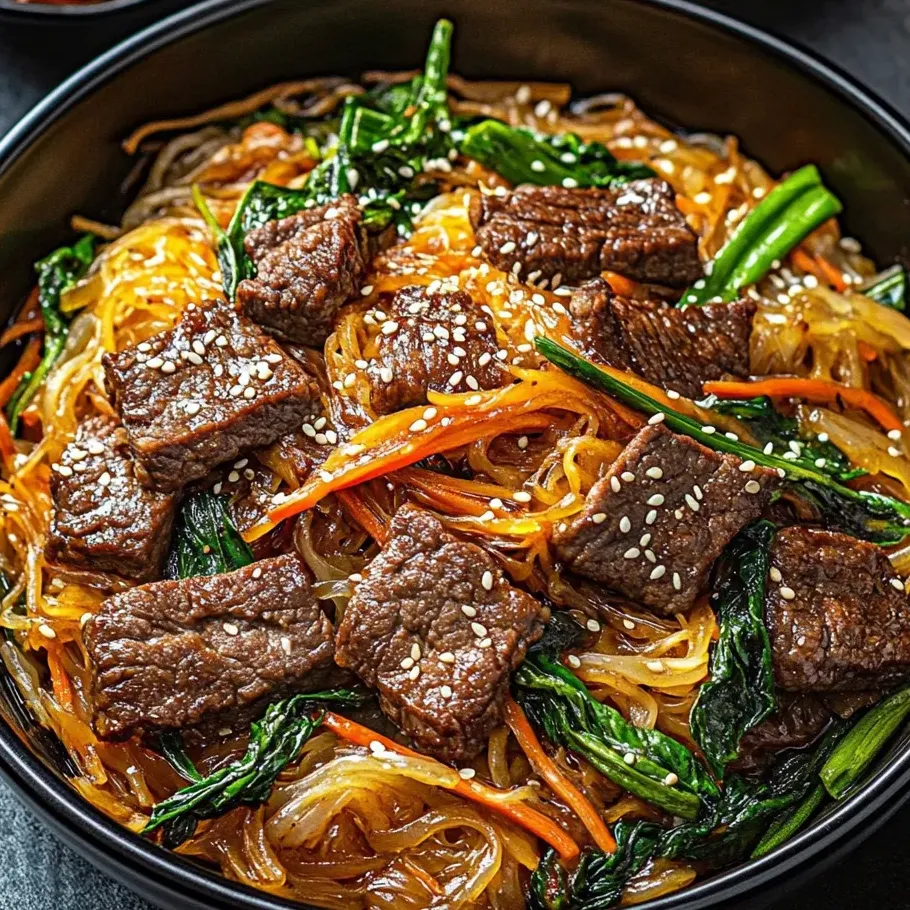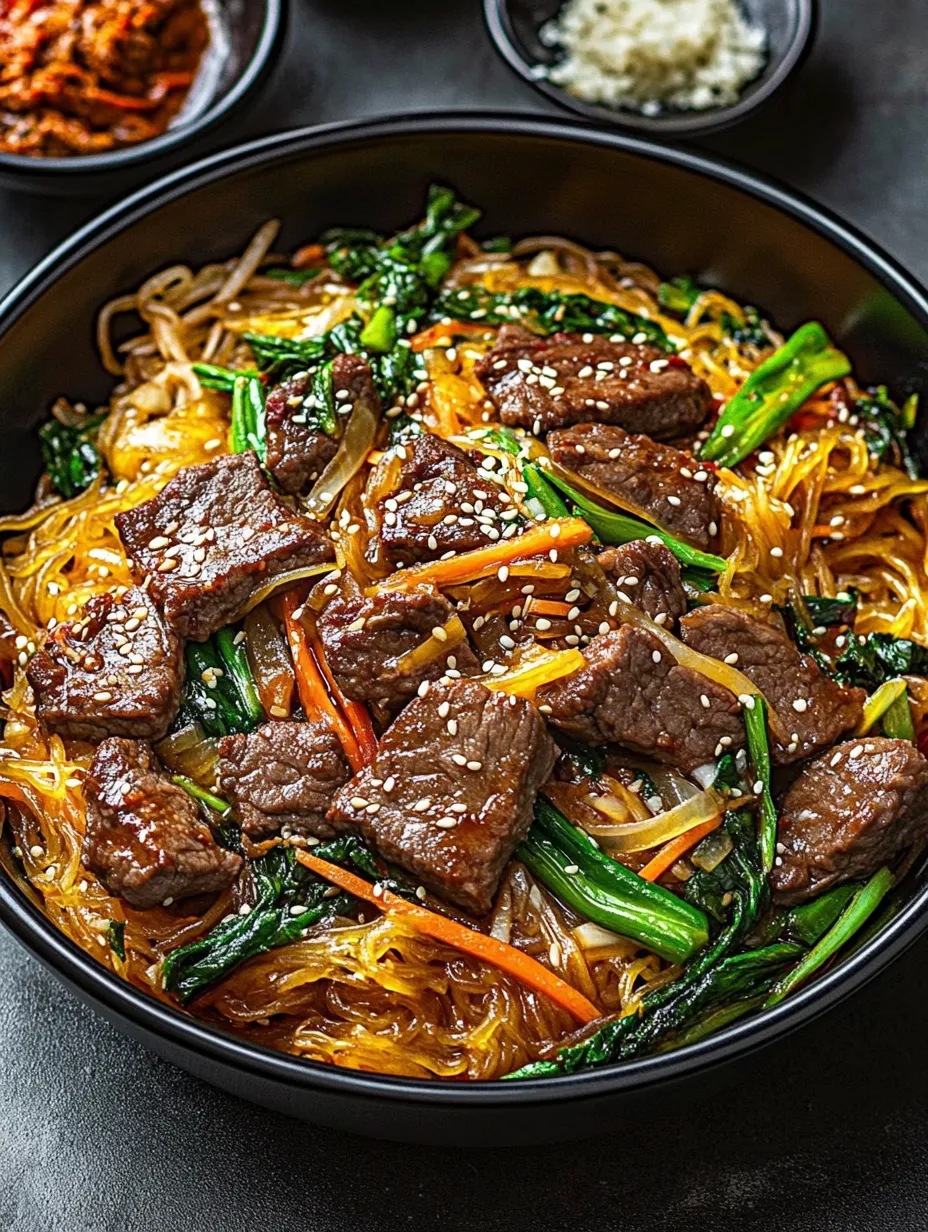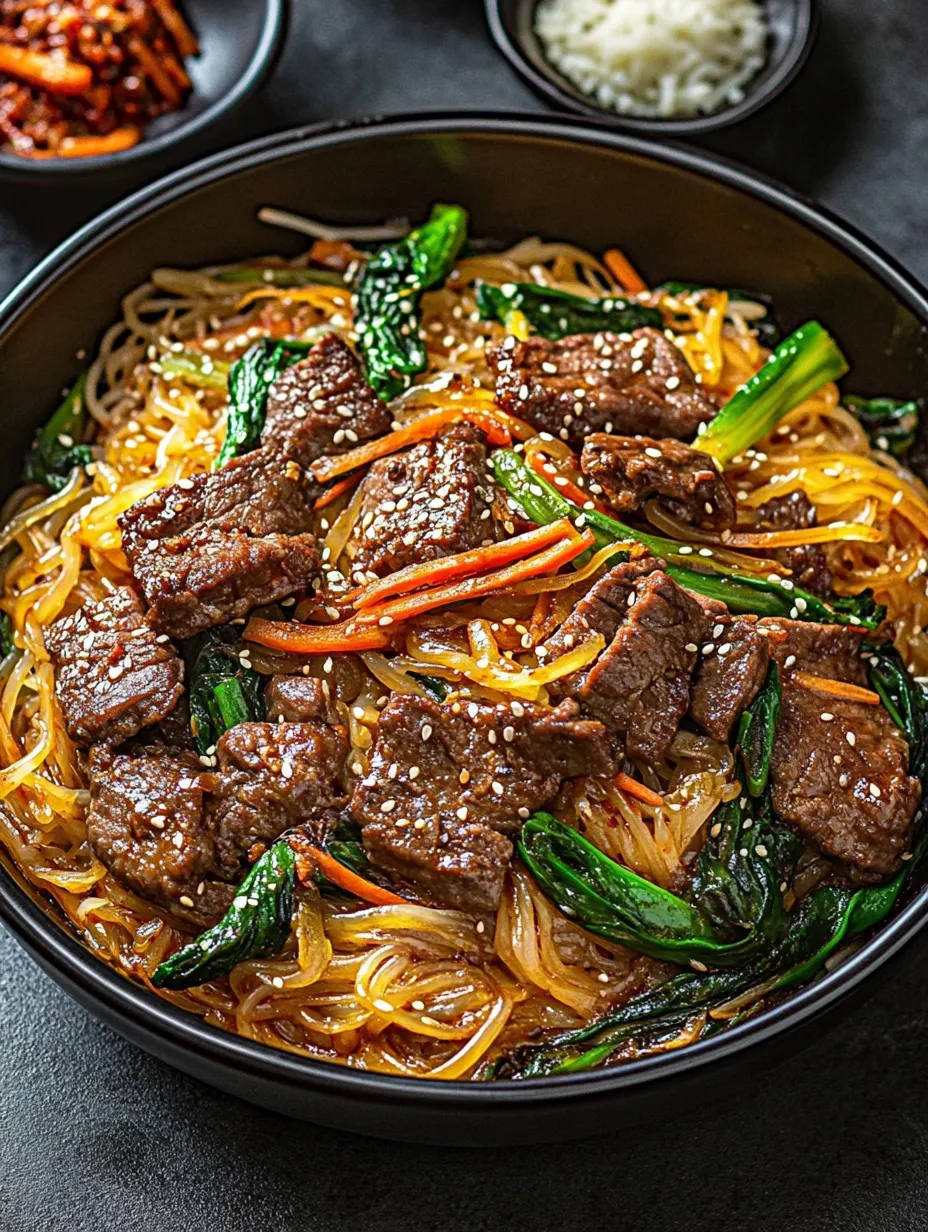 Save
Save
Japchae’s chewy glass noodles and colorful beef-and-veggie mix always turn heads at family get-togethers or potlucks. These springy sweet potato strands drink in the salty-sweet sauce while each veggie and meat slice brings a little something extra to every bite. Whenever I’m in the mood for cozy but lively food, this is what I’m craving.
The first time I pulled off japchae was for my friend’s birthday after spotting it on TV, and ever since, it’s been a go-to party dish here. Honestly, every time I cook it, the house smells amazing and no one’s shy about going back for seconds.
Vibrant Ingredients
- Spinach: Brings a pop of green and soft texture Pick fresh baby spinach—the darker, the better
- Sesame oil: Packs in that deep, nutty taste The toasted Korean kind gives the best punch
- Korean glass noodles (sweet potato): These see-through noodles are the secret for a classic version Find them at Asian markets Choose clear and whole ones if possible
- Sliced beef: Makes things hearty and filling Look for beef with marbled fat or mix things up with tofu, shrimp, or chicken
- Brown sugar: Rounds everything out with mellow sweetness Use soft, fresh sugar if you can
- Carrots and onion: Throw in sweetness plus crunch Thick, heavy carrots and onions are best
- Green onion: Adds sharp freshness Go for bright, crisp green tops
- Olive oil: Makes vegetable sautéing easy and keeps noodles separate Choose a light, neutral one
- Garlic: Brings the signature savory depth Fat, juicy cloves work best
- Soy sauce: Gives that umami kick Stick with a good Korean or Japanese brand, or tamari for gluten free
Easy Step Guide
- Finish and Toss It All:
- Put the noodles you drained into a roomy bowl Add in all your beef and veggies, plus the spinach Give it a big toss with tongs or grab some kitchen gloves to mix by hand so everything gets a good splash of that sweet-sharp sauce
- Soften the Spinach:
- Toss your spinach into the veggie pan Let it just wilt and turn deeper green Don't overdo it
- Sauté Your Veg:
- Heat some olive oil in a skillet on medium high Throw in your carrot matchsticks and onion slices Let them cook a few minutes until tender Stir in the rest of your soy, brown sugar, and sesame oil, so everything’s glossed up Add your minced garlic and sliced green onion for a burst of aroma
- Start With Noodles:
- Boil up a large pot of water Sprinkle in a bit of olive oil Add in the glass noodles and let them bubble for about five to six minutes until soft but chewy Drain well so they’re not watery, then set aside
- Give the Meat Some Color:
- Crank a skillet to high, then cook your beef strips, stirring so they’re done evenly While they sizzle, add half of your soy sauce, brown sugar, and sesame oil to layer in flavor Once browned, scoop the beef out and let it rest on a plate
- Serve It Up:
- Gently reheat the finished japchae if you want all the flavors blooming Top with more chopped green onion for a bright hit Eat it warm or let it cool to room temp

What keeps me coming back for japchae? Those stretchy noodles that drink up all the sauce, for sure. My kids always reach for the last bits of beef and carrots—makes serving it extra fun. It even turned our regular Sunday dinner into a special one. That’s what makes this dish memorable for me.
Leftover Basics
Japchae stays tasty in the fridge for three days if you pop it into a tight-sealing container. Since the noodles are sturdy, reheating won’t turn things mushy. Just hit it with the microwave or warm it up in a frying pan and it comes back to life like new.
Easy Swaps
Try swapping beef with chicken, tofu, or shrimp for fresh twists. Toss in whatever stir fry vegetables you’ve got like zucchini, shiitakes, or even red peppers for color. Tamari makes this easy for gluten free folks.
Fun Ways to Serve
Japchae is great hot or cold. Try it as a main dish or pile it onto a lettuce leaf for crunch. A little kimchi or pickled radish next to it gives you classic Korean vibes.

Korean Traditions
Japchae goes back centuries, once saved for royal tables. These days, it shows up at big celebrations like birthdays or Lunar New Year. It always brings party energy, no matter when you serve it.
Frequently Asked Cooking Questions
- → Which sauce flavors define japchae?
Soy sauce, sesame oil, and brown sugar come together for that nutty, savory, and lightly sweet kick japchae is known for.
- → How can I keep the vegetables crisp in japchae?
Just a short stir-fry over high heat keeps the veggies bright and a little crunchy without turning mushy.
- → Is japchae served hot or cold?
Japchae works both ways. Go with it warm or at room temp—it’s super handy for lunchboxes or group meals.
- → Can japchae be made gluten-free?
Yep! Pick tamari instead of regular soy sauce and double-check the noodle label to be sure they're gluten-free.
- → Can I use different proteins for japchae?
Absolutely. Beef isn’t your only option—try some shrimp, tofu, or chicken if you want to change things up.
- → What makes glass noodles chewy in japchae?
Those Korean sweet potato noodles give japchae its fun, bouncy chew. Don’t overcook them if you want to keep that texture nice and springy.
